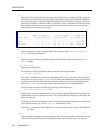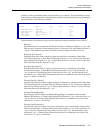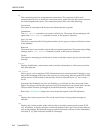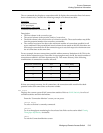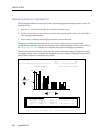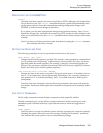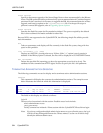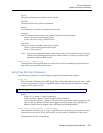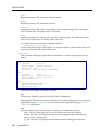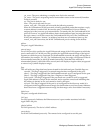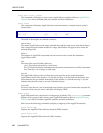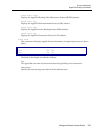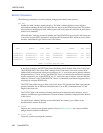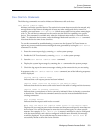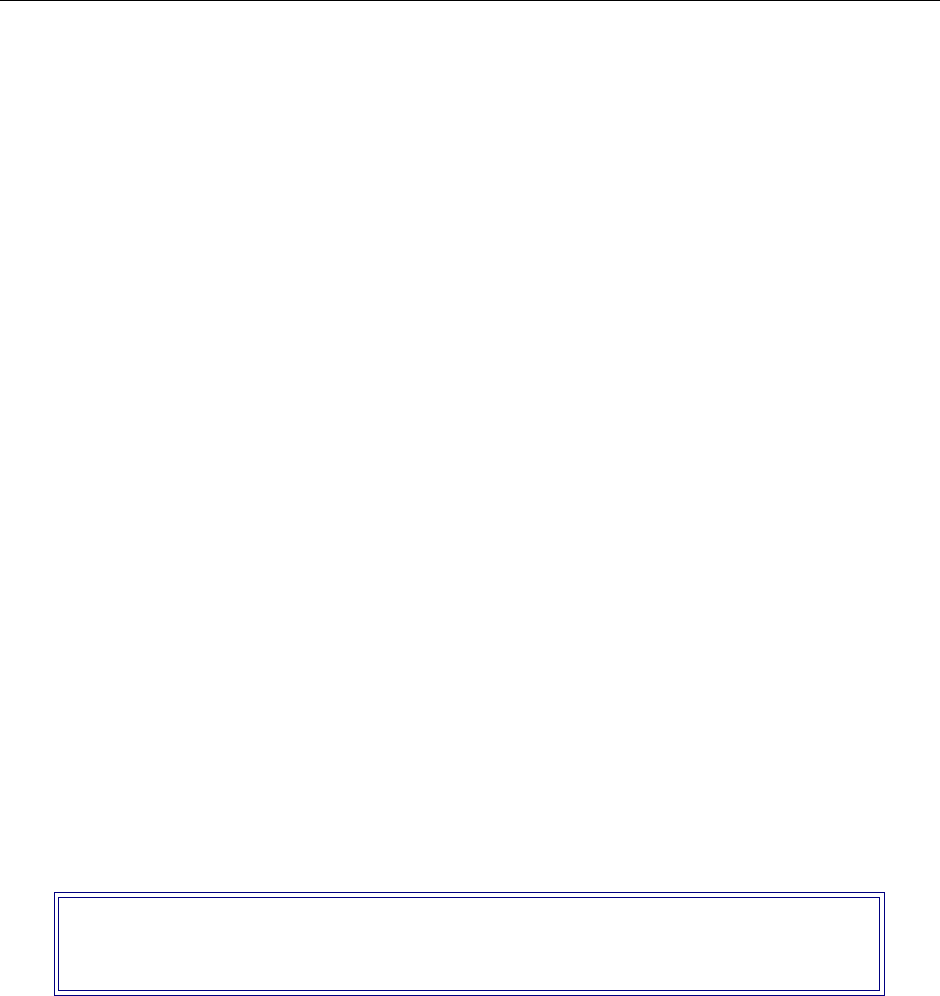
USER’S GUIDE
524 CyberSWITCH
flash recover
Specific to the remote upgrade of the Second Stage Boot or when recommended by the Release
Notes. The SSB update should be performed only upon recommendation of Customer Support
personnel. In the event that it is necessary to upgrade the SSB, this command starts the remote
upgrade, and bases its update on the \system\recover1 file. For the specific steps to
perform a remote SSB upgrade, refer to Upgrading System Software.
flash reclaim
Searches the flash file system for files marked as deleted. The space occupied by the deleted
files is then reclaimed and made available for other files.
Because DOS is not supported on the CyberSWITCH, the following simple file utilities provide
basic information:
dir
Takes no parameters, and displays all files currently in the flash file system, along with free
space in each partition.
list <filename> [/c] [BIN]
Displays an ASCII file - pausing after every 24 lines. If the “/c” option is used, pausing is
disabled. If the BINary option is selected, the files will be displayed in UUENCODED format.
del <filename>
Deletes the specified file (assuming you have the appropriate access level to do so). The
attributes for this command track TFTP rights. Be sure to specify the file’s full pathname.
TERMINATING ADMINISTRATION SESSIONS
The following commands are used to display and to terminate active administration sessions.
session
This command will display the current active administration sessions. The example screen
below illustrates the format in which this information is displayed:
The fields in this display are defined as follows:
Login-Id
The access level associated with the session. Possible access levels include:
admin: administrator access
guest: guest access
nobody: someone has initiated a Telnet session with the CyberSWITCH but did not login.
Note: If you have configured multiple admin login names on your off-node server, the login-
id field will not distinguish between the various names. Use the sess-id field to help
identify the different admin users.
Login-Id Sess-Id Date/Time Idle(sec) Command Type (from)
-------- ------- --------- ---------- ------- -------------------
ADMIN 0 Aug 15 13:50 51 MANAGE Console
ADMIN 257 Aug 15 13:55 0 SESSION Telnet (199.120.211.120)



